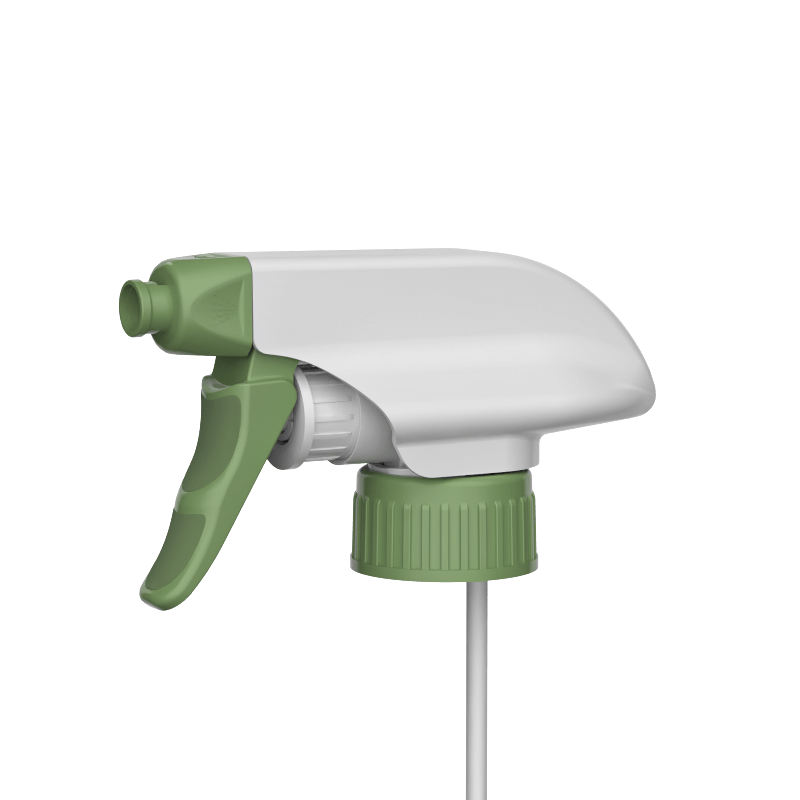Overview of Trigger Sprayer Part Replacement Issues
A trigger sprayer is a liquid spraying tool widely used in cleaning, gardening, chemical, and beauty applications. Its structure includes multiple components, including the trigger mechanism, nozzle, suction tube, seals, and housing. During daily use, some parts may become damaged by wear, aging, corrosion, or external forces, affecting the sprayer's proper function. In such cases, users often wonder whether individual parts can be replaced without having to replace the entire sprayer. Whether individual parts can be replaced depends on product design, parts availability, and user experience. This article will discuss in detail the structural components, damage causes, replaceability analysis, parts procurement channels, and installation precautions.
Main Structure and Parts of a Trigger Sprayer
To understand whether a trigger sprayer's parts can be replaced individually, it's important to first understand its structural composition. Generally speaking, a trigger sprayer consists of a nozzle assembly, trigger handle, pump cartridge, suction tube, seals, spring, and housing. The nozzle assembly controls the spray pattern and liquid volume; the trigger handle connects to the pump core, driving the liquid spray; the pump core is the pressure-sensitive component; the straw draws liquid from the bottle; and the sealing ring and spring ensure a tight seal and rebound performance. These components are designed as separate, removable modules, while others are integrated, making individual replacement difficult. Therefore, the product's assembly method and design directly impact the feasibility of component replacement.
Common Causes of Trigger Sprayer Damage Analysis
During use, trigger sprayers can suffer damage from a variety of factors. Frequent application of the trigger handle can cause wear or breakage at the hinge; prolonged exposure to highly corrosive liquids can accelerate the aging of the sealing ring, leading to leakage; nozzles left uncleaned can become clogged with impurities, affecting spray performance; the spring can rust in humid environments, resulting in uneven rebound; and pump core wear reduces spray pressure. These damages don't necessarily require complete replacement. If the components are removable and matching replacements are commercially available, they can be replaced individually, saving costs and reducing resource waste.

Factors Affecting the Replaceability of Trigger Sprayer Parts
The replaceability of accessories is primarily influenced by the following factors. First, product design. Some trigger sprayers feature a modular design, allowing individual components to be disassembled and assembled separately. Some low-cost products, on the other hand, are assembled in a one-time assembly process, and disassembly can cause irreversible damage. Second, the availability of accessories. If the manufacturer or a third-party supplier provides individual components such as the nozzle, straw, and seal, replacement is possible. Third, the user's operational skills and tool availability are important. If the user can properly disassemble and assemble the sprayer and ensure that the seal is not compromised after installation, replacement is possible. Finally, the economics of replacing the accessory should be considered. If the price of the accessory is close to the price of the entire sprayer, replacing the entire sprayer may be more cost-effective.
Common Replaceable Accessories and Their Applications
In most cases, trigger sprayer accessories such as the nozzle, straw, seal, and spring are easily replaced individually. Damage to these components generally does not affect the structural integrity of other components, and replacement is relatively simple. While the pump cartridge and trigger handle can be replaced, their close connection to the outer casing makes disassembly and assembly complex, requiring both tools and experience. The following table lists common accessories and their replacement requirements:
| Part Name | Function Description | Replaceable or Not |
|---|---|---|
| Nozzle | Controls the spray pattern and liquid flow | Can be replaced individually |
| Trigger Handle | Provides manual force to drive liquid spraying | Can be replaced individually |
| Pump Mechanism | Responsible for drawing liquid from the bottle to the nozzle | Can be replaced individually |
| Dip Tube | Extends into the container to draw out liquid | Can be replaced individually |
| Bottle Neck Fitting | Connects the sprayer to the bottle and ensures sealing | Can be replaced individually |
| Sealing Ring | Prevents liquid leakage from the connection | Can be replaced individually |
Accessory Purchasing Channels and Selection Tips
When replacing trigger sprayer accessories, consumers can obtain the required parts through various channels. These primarily include the manufacturer's after-sales service, hardware stores, professional sprayer parts suppliers, and e-commerce platforms. When purchasing, it's important to ensure that the accessory compatibility with the original model is achieved, including parameters such as size, thread specifications, material, and chemical resistance. If the device is used to spray chemical cleaners or pesticides, corrosion-resistant materials should be prioritized. For consumable parts such as seals, it's advisable to have an excess supply for subsequent maintenance. It's recommended to purchase from reputable vendors to ensure quality and after-sales service.
Installation and Maintenance Precautions When Replacing Accessories
When replacing accessories, it's important to follow the correct operating procedures to ensure the sprayer returns to normal function. First, empty the bottle and clean the interior before replacing it to prevent impurities from entering the new accessory. Second, pay attention to the direction and position when installing the seal or nozzle to avoid leaks or abnormal spraying due to improper installation. For parts requiring threaded connections, tighten them moderately to prevent damage to the threads due to overtightening. After installation, a test spray test should be carried out to check the spray uniformity and sealing. In daily use, the nozzle and straw should also be cleaned regularly to prevent blockage that affects the spray effect.
.png)
 English
English Español
Español русский
русский Français
Français italiano
italiano Deutsch
Deutsch